Image masking services involve separating specific parts of an image from the background. They enhance and isolate a subject, making them essential for photographers and e-commerce.
Image masking services are crucial for businesses that require precision in showcasing their products online. Expertise in intricate editing techniques allows professionals to curate visuals that captivate customers. The method is perfect for dealing with complex edges and fine details like fur, hair, and feathers, which traditional clipping paths may not accurately capture.
These services ensure that promotional images look professional and clean, providing a seamless shopping experience for online consumers. By leveraging advanced software and skilled editors, image masking can significantly boost the aesthetic appeal of product catalogs, leading to increased customer engagement and potential sales growth. This specialty service is not just for e-commerce; it’s also vital for professional photographers who aim to create striking, high-quality portfolios.
Introduction To Image Masking
Image Masking is a pivotal technique in photo editing, designed to refine the visual appearance of images. It involves creating layers to hide and reveal portions of an image, enabling precise alterations without impacting the integrity of the original. This process is paramount for professional photographers and graphic designers seeking to isolate subjects from their backgrounds or apply complex edits requiring a high level of detail and control.
The technique comes in various forms, including Layer Masking, Alpha Channel Masking, and Clipping masking. Each type has its application, with Layer Masking being the most common, allowing for transparency adjustments. At the same time, Alpha Channel Masking is better suited for images with delicate details like fur or hair. Comparatively, the clipping mask is helpful for complex shapes and contours.
Choosing Image Masking Services over other photo editing methods can be advantageous when dealing with complex compositions. Unlike essential photo editing tools that may affect an image’s edges or fail to capture detail, masking provides a non-destructive approach to editing. It offers a higher level of precision, making it a go-to option for professionals who demand the utmost quality in their work.
Applications And Use Cases
Professional photographers and editors often leverage image masking services to refine their photographs, ensuring that edges are crisp and subjects are beautifully isolated from their backgrounds. Such services are crucial for high-quality portfolios and client projects, where visual appeal and detail are paramount.
Image masking is pivotal in creating eye-catching marketing materials in graphic design and marketing. Designers use these techniques to compose professional brochures, flyers, and business cards that convey brand messages and capture audience attention through striking visuals.
E-commerce platforms consistently seek ways to showcase their products with greater clarity and appeal. Image masking services facilitate the presentation of online merchandise with clean, consistent backgrounds, enhancing the shopping experience and helping products stand out, which is essential in a highly competitive digital marketplace.
Practical Guide To Image Masking Services
Choosing the right image masking service requires attention to detail. Consider the complexity of your images and the level of precision needed. Ensure the service provides a portfolio of their work to guarantee they can handle challenging projects. Experience and technical capability should be top considerations.
The process of image masking is intricate. It begins with selecting the proper tool in your chosen software. Then, outline the subject that needs masking. After creating the path, convert it to a mask. Fine-tune the mask by adjusting the edges to blend seamlessly with the new background.
Effective masking outcomes are achievable by adhering to several tips:
- Use a graphics tablet for higher control and precision.
- Maintain a zoomed-in view to capture fine details while masking.
- Regularly switch between the foreground and background views to assess the quality of the mask.
Advanced Masking Techniques And Technologies
Artificial Intelligence (AI) has revolutionized image masking, providing unprecedented accuracy and efficiency. Thanks to sophisticated AI algorithms, complex image-compositing tasks that took hours can now be accomplished in minutes. By analyzing image content with remarkable detail, these technologies automatically distinguish between subtle edges and textures, effectively isolating subjects with precision.
Meanwhile, 3D masking capabilities have opened new frontiers for creative expression and realism in imaging. Software now harnesses the power of depth sensing and 3D modeling to create masks that fully comprehend an image’s spatial orientation, providing a more authentic and dynamic layering effect.
Looking into the future, image masking software shows no signs of stagnation. We’re witnessing a continuous evolution, with trends pointing towards increased integration of cloud computing, real-time collaboration features, and even further advanced AI implementations. These developments hint at the future, where intricate image editing tasks will become more accessible and efficient than ever before.
Ethical Considerations And Best Practices
Maintaining authenticity in photo editing is a critical concern for image masking services. Professionals in the field must balance the need to enhance visuals while preserving the original integrity of the photographs. It’s crucial to employ techniques that do not deceive viewers or misrepresent subjects.
Concerning legal implications and intellectual property rights, service providers must obtain proper permissions before altering images. Ensuring that modifications do not infringe on copyrights or the personal rights of individuals portrayed is paramount for mitigating legal risks.
Adhering to standards and guidelines for professional image masking is essential. Service providers should follow industry best practices, including transparent client communication about the extent of edits and maintaining a high level of quality in the finished product.
- Aspect Consideration
- Authenticity Enhance without misrepresenting
- Legal Obtain permissions, respect copyrights
- Standards Follow best practices, ensure quality
Frequently Asked Questions Of Image Masking Services
What is masking in imaging?
Masking in imaging is a technique used to hide or reveal specific parts of an image, allowing for selective editing and compositing of layers.
What is the Layer Masking Service?
A layer masking service is a photo editing technique that allows non-destructive adjustments to an image’s visibility without altering the original layers.
How Can I Mask My Photos for Free?
Use online tools like Canva or Adobe Express to mask photos for free. Select a design template, upload your image, and apply the mask feature.
How Do I Mask an Image Online?
Choose a free image editor:
- Choose, like Canva or Adobe Spark, to mask an image online.
- Upload your photo, select the masking option, and apply the desired shape or pattern.
- Ave and download the edited image.
Conclusion
Embracing image masking services can genuinely elevate your visual content. Such precision in editing enhances images and drives engagement. By outsourcing or mastering this skill, your images will captivate and convert like never before. Trust in the power of detail; let image masking unlock your creativity.



